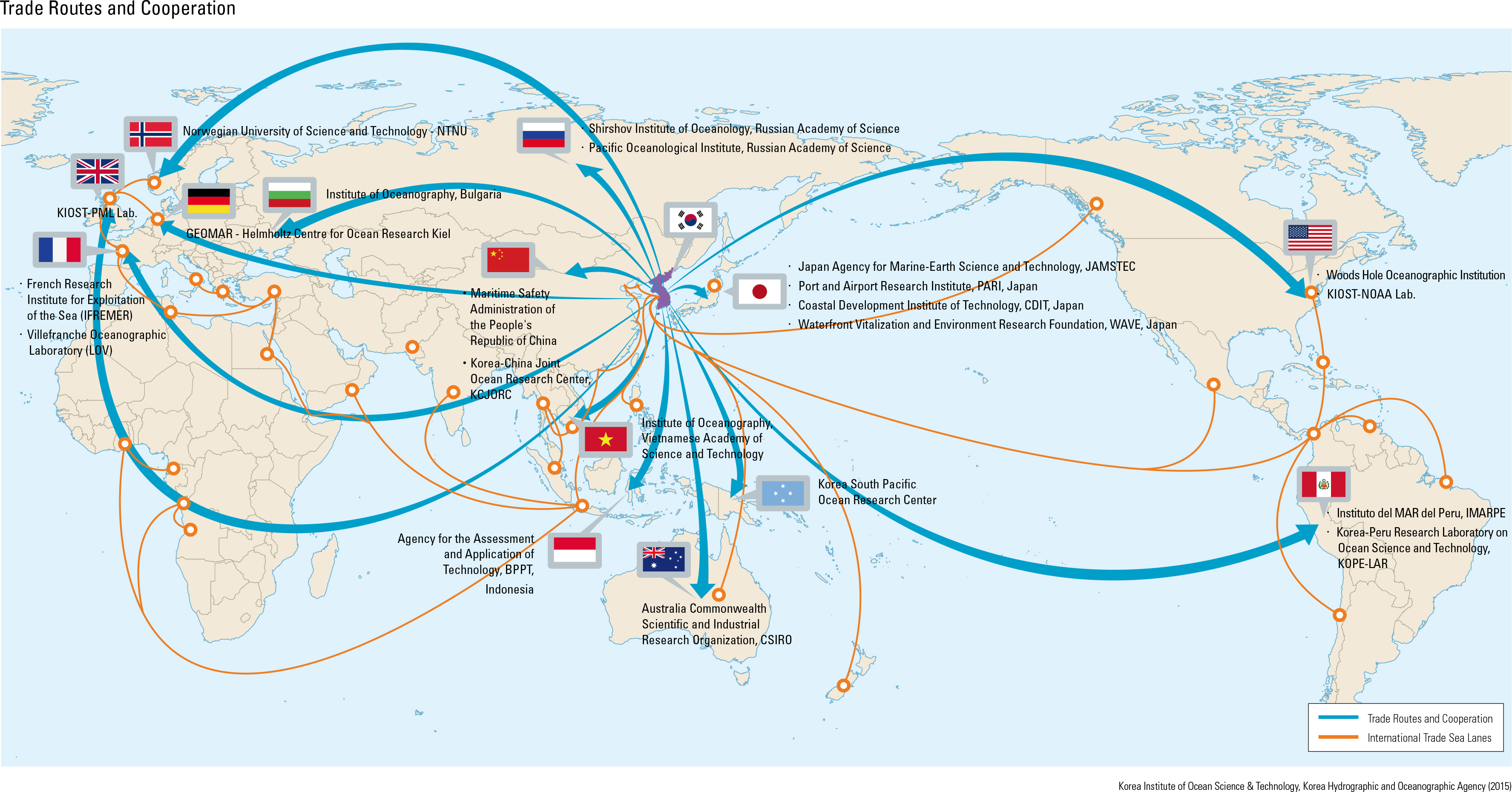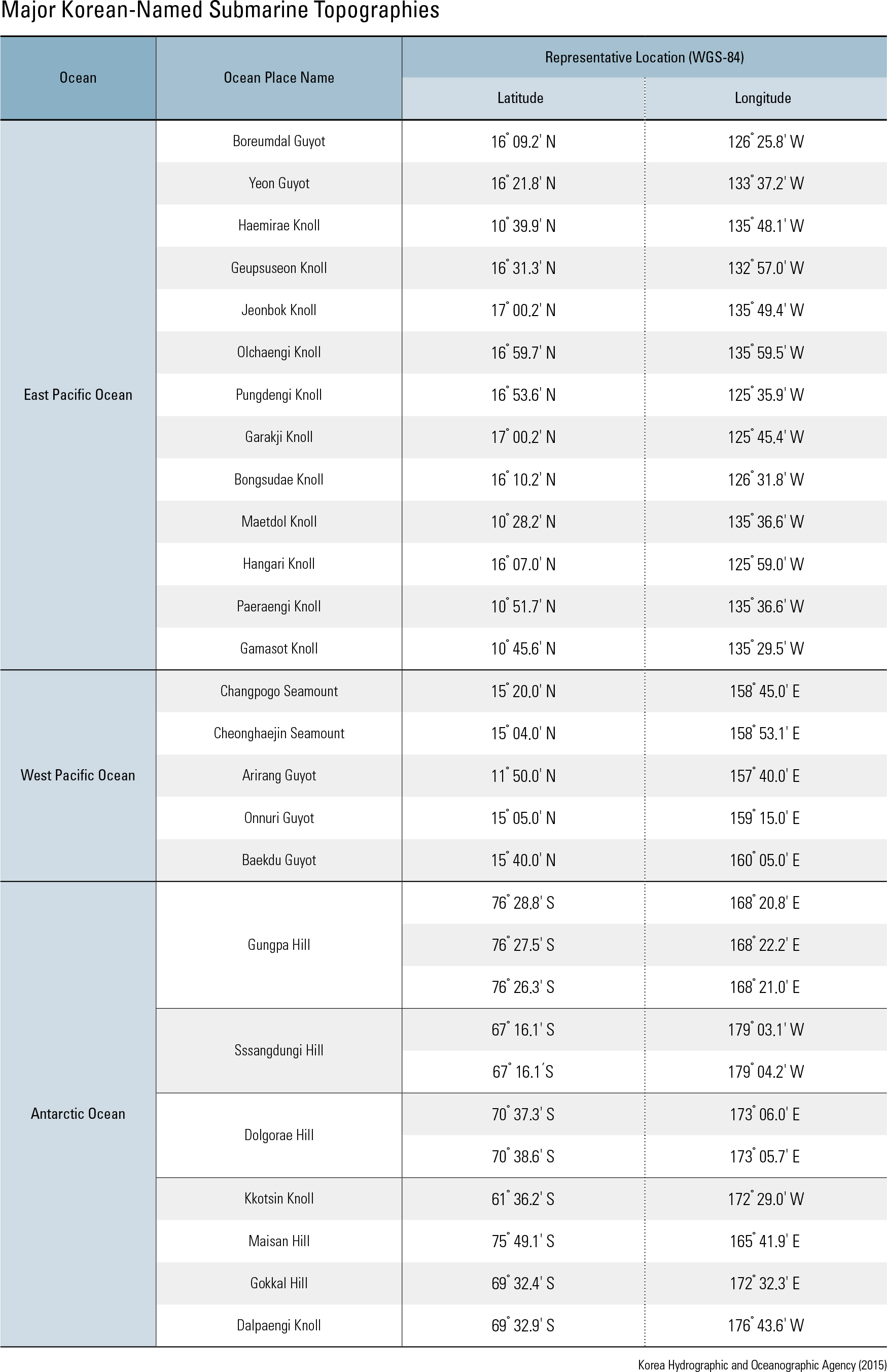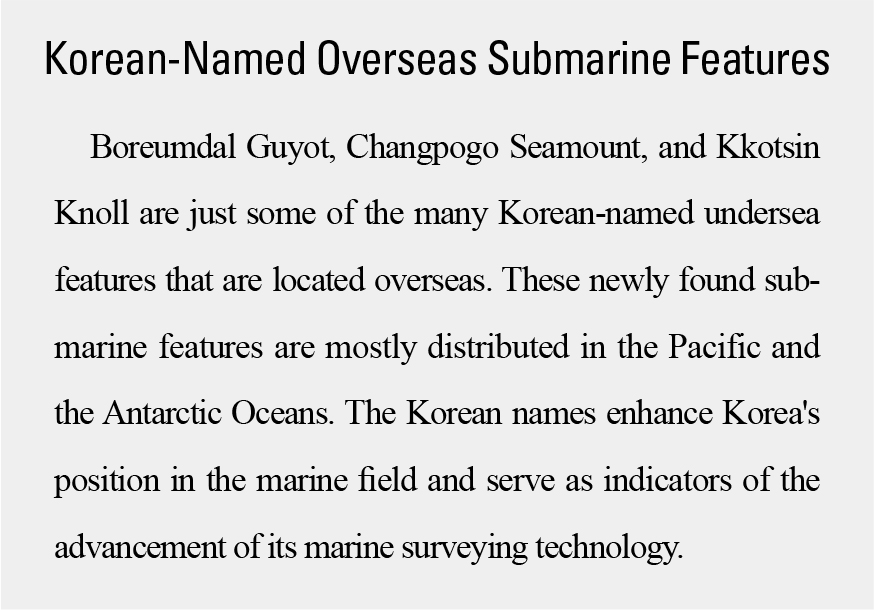English II
International cooperation in marine affairs plays a leading role in handling marine environmental issues around Korea, advancing marine environ- mental management, and enabling national em- powerment. It also increases national influence within the global society through the reinforce- ment of activities in international organizations and regional communities. The figure above dis- plays the some of the many overseas laboratories and institutes that hold partnerships with South Korea. Partnerships in Environmental Management for the Seas of East Asia (PEMSEA) was established as a project of the United Nations Development Programme (UNDP) to promote collaborations on marine environment initiatives around East Asia, including marine ecosystem preservation and sus- tainable use planning for coastal/marine resources. Eight member countries developed the program as an international organization in 2009 to further manage marine environment issues. Korea became a member in 1994 and is currently one of eleven countries (including China, Japan, Singapore, and Vietnam) that are working with the organization. Since 1974, the United Nations Environment Programme (UNEP) developed a series of world regional sea programs. As one of the programs, the Coordinating Body on the Seas of East Asia (COBSEA) was established in 1994 for preserving and developing the East Asian coastal/marine en- vironment. A total of ten countries, including Ko- rea (which joined in 1994), Indonesia, Cambodia, Malaysia, and China, are currently developing and implementing management guidelines for marine environment preservation, and also estimating the status of the marine environment in the East Asian seas. The Northwest Paci c Action Plan (NOWPAP), also one of UNEP’s regional programs, was founded in 1994 by the governments of four coun- tries near the Northwestern Paci c Ocean (Korea, China, Japan, and Russia). It was established with the aims to strengthen the countries’ cooperation in preserving coastal/marine environments and in pursuing sustainable development in the North- western Pacific Ocean. NOWPAP has four local activity centers that are used for its annual inter- governmental conference, secretariat, joint proj- ects, and expert meetings. The Yellow Sea Large Marine Ecosystem (YS- LME) project was established with the support of Korea, China, and the UNDP/Global Environment Facility (GEF). Its agenda pushes for the sustain- able use of the Yellow Sea environment, which has been damaged by the overfishing of marine resources and reckless coastal development. The rst stage of the project was carried out from 2005 to 2009 and the second stage, which began in June 2014, will continue on to May 2017. The purpose of the second stage is based on the national strate- gic plan to reduce pollution sources and preserve sheries in the Yellow Sea. The Korea-China Yellow Sea Marine Environ- ment Joint Survey, which was carried out over a 12-year period from 1997 to 2008, is the sole Yellow Sea project that Korea and China surveyed together. The results of the survey are projected to be helpful in solving marine environment disputes between the two countries.
page_2 |


